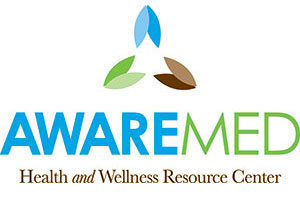IV Nutritional Therapy in Bristol, VA

Why IV nutrition therapy?
IV therapy has been trending for years as the partyer pro’s hangover helper. Infusing high concentrations of vitamins into the bloodstream through an intravenous needle can rehydrate you after a night of heavy drinking by flushing out toxins and restoring nutritional balance. But this century-old nutritional therapy also relieves a wide spectrum of conditions – from asthma to sexual dysfunction.
Vitamin and mineral deficiency may sound insignificant, but in some people it can cause severe health conditions. A good number of people, actually. According to the CDC and the U.S. Department of Agriculture (USDA):
- 9 out of 10 Americans are deficient in potassium
- 7 out of 10 are calcium deficient
- 8 out of 10 don’t get enough vitamin E
- more than half of Americans are deficient in vitamin A, vitamin C, vitamin D, and magnesium
- 90% of Americans of color are vitamin D deficient
- approximately 70% of elderly Americans are vitamin D deficient
Traditionally, IV vitamin therapy candidates were those unable to eat enough food, or whose illness interfered with nutrient absorption, like IBS does.
But studies have also demonstrated that certain vitamins and minerals are optimally absorbed through the blood0. You can only absorb about 50% of a vitamin you swallow, but you’ll absorb 90% of a vitamin that’s delivered directly into your bloodstream.
Orally, your gut can absorb up to 1,000 mg of Vitamin C per hour. But absorbing that much per hour can aggravate your digestive tract and cause diarrhea. Your stomach’s ability to absorb nutrients depends on the chemical makeup of your diet and:
- your age
- your metabolism
- your health status
- your genetics
- contraindications with other medications
Benefits of intravenously delivered nutrition
The more vitamins and minerals your blood cells can take in, the greater your ability to fight illness, relieve stress, expel toxins, balance hormones, and reenergize. Exact amounts for your specific situation should always be prescribed by a healthcare practitioner who knows your body. IV vitamins are water soluble, so once your body uses what’s needed, your kidneys will excrete the excess through urine.
Common benefits include:
- hydration: an increase of fluids can prevent and treat symptoms of dehydration
- improved absorption: nutrients delivered directly to the bloodstream are absorbed quickly and efficiently
- immune boost: many nutrients—especially vitamin C—help cells fight infection
- improved energy: vitamin b12, vitamin C, calcium, and magnesium are energy boosters
- stress relief: vitamin C, vitamin B5, and magnesium regulate cortisol hormone levels
- detoxification: nutrients like glutathione can flush out toxins like heavy metals
Conditions commonly treated with IV nutritional therapies include:
- dehydration
- fatigue
- migraines
- asthma
- fibromyalgia
- muscle spasms
- dementia
- allergies
- sinus and respiratory tract infections
- heart disease
- lupus
Nutrients commonly delivered by IV therapy
As with any medical procedure, results of IV therapy will vary from patient to patient depending on age, genetics, general health, condition severity, follow-up care, and environmental factors. Consult your healthcare provider before embarking on your treatment journey.
IV Glutathione
This naturally-occurring antioxidant helps detoxify the body by removing free radicals (waste products created when your body turns food into energy). Glutathione levels decrease with age, so glutathione IV benefits may stave off heart disease and dementia. Long-term use may cause zinc deficiency. Not for asthmatic patients.
Vitamin C
The phagocytes and T-cells in our immune system need this powerful antioxidant to help kill off invaders1. Vitamin C IV therapy is used to treat conditions like the common cold, Lyme disease, shingles. Vitamin C can be given to patients with cancer who are commonly deficient2.
Side effects may include pain at the injection site, shakiness, achiness, and a temporary low blood sugar. Do not use this therapy if you have congestive heart failure, ascites, or edema . Do not take with drugs like fluphenazine or mexiletine.
Magnesium
Magnesium is a vital energy generator, so deficiency causes fatigue, irritability, muscle cramps, and insomnia. Magnesium infusion can also treat headaches3. Side effects include irregular heartbeat, breathing difficulties, weakness, or confusion. May cause adverse effects if you have kidney or heart disease, gut issues, or if you’re dehydrated.
Vitamin D
Vitamin D supports bone and teeth health by regulating calcium and phosphorus absorption and regulating immune system function. A vitamin D home test can alert you to a deficiency, but supplementing should be done by your nutritionist or healthcare provider.
B-Complex
B-complex is composed of eight B vitamins, and there’s a growing demand to learn how to increase vitamin B12. These vitamins turn food and nutrients into energy and create red and white blood cells. B-complex may treat anemia and reduce stress, depression, and anxiety.
IV Myers’ Cocktail
Created in the 1960’s by John Meyer, this is a mixture of B vitamins, magnesium, calcium, and vitamin C. The cocktail is used to treat numerous conditions including migraines, fatigue, and seasonal allergies. A placebo study also found that it could treat fibromyalgia3. Side effects may include fainting, muscle cramps, and flushing.
Glycyrrhizin
The glycyrrhizin found in licorice root has antiviral and anti-inflammatory properties. It is most commonly used to treat liver diseases like hepatitis C , acute alcoholic hepatitis, and liver cancer4.
Glycyrrhizin can also help balance glucose levels, relieve asthma symptoms, and protect against cardiovascular disease4. Research suggests that it can be used to combat kidney failure, and may inhibit skin cancer and prevent brain tissue damage4. Glycyrrhizic acid also has very few side effects4, though there have been reports of hypertension and electrolyte disturbances.
Iron Infusion
Iron supports your hemoglobin (red blood cells), which distribute oxygen throughout your body. Iron infusions can alleviate anemia and improve energy and breathing. Mild side effects include joint pain, muscle pain in the chest or flank, and facial flushing5. Do not take IV iron if you have hemochromatosis or low blood pressure .
NAD IV Therapy
This coenzyme can increase energy, improve mental clarity, reduce cravings and withdrawal symptoms in addicts, alleviate depression, and improve mood. Research also suggests that NADH can restore kidney and cardiac health6.
Alpha Lipoic Acid (ALA)
Found in every cell in your body, this antioxidant helps turn glucose into energy and removes free radicals which damage DNA. With alpha lipoic acid, neuropathy, diabetic peripheral neuropathy7, dementia, and multiple sclerosis, and lupus can be treated.
Chelation Therapy
This IV therapy removes heavy metals, improves circulation, hypertension, heart disease, memory decline, and diabetes complications. It is also an effective treatment for poisoning8. Side effects include a burning feeling near the infusion site, fever, headache, and nausea. Do not undergo chelation therapy if you have an allergy to penicillin or poor kidney function.
How IV therapy is delivered and when it shouldn’t be
A qualified nurse or healthcare professional will find a vein and secure the needle in place, which could take a couple of attempts if you’re dehydrated. He or she will then monitor your vitamin infusion to ensure required amounts of vitamins and minerals are being delivered.
Potential side effects of IV nutritional therapy include:
- infection: while unlikely, an infected IV needle can release bacteria
- vein inflammation or irritation
- air embolisms: air bubbles inserted through your IV into your blood vessels can block your circulation and increase your risk of a stroke
- fluid overload: too much fluid in your circulatory system can upset your electrolyte balance and damage your organs
Do not undergo IV nutritional therapy if you are pregnant, are breastfeeding, have kidney disease, heart conditions, or high blood pressure. Those with kidney disease cannot quickly remove certain electrolytes and minerals from your body. Too much potassium can increase your risk of a heart attack, and fluid overload can be potentially dangerous for people with high blood pressure and congestive heart failure.
In order to minimalize the possibility of these side effects, find a medical professional who is highly trained in intravenous infusion. He or she should ask about your medical history and medications or conditions that may preclude you from IV therapy, practice good hygiene (washing hands and changing gloves after each treatment), and never rush through your treatment.
Reserve your appointment
Sometimes intravenous delivery is the optimal way to address vitamin and mineral deficiencies – but it should always be done by an experienced healthcare provider who is aware of your whole medical history and current health profile. To speak with an IV Therapy specialist today in Bristol, call (423) 482-8711 or contact Dr. Dalal Akoury online.
Sources:
0. JF, Jin, et al. “The optimal choice of medication administration route regarding intravenous, intramuscular, and subcutaneous injection.” Patient Prefer and Adherence 9 (2015): 923-942. Web. 30 Oct. 2018.
1. A, Ströhle, and Hahn A. “Vitamin C and immune function.” Medizinische Monatsschrift fur Pharmazeuten 32.2 (2009): 49-54. Web. 23 Oct. 2018.
2. A, Mauskop. “Intravenous magnesium sulfate rapidly alleviates headaches of various types.” Headache 36.3 (1996): 154-160. Web. 24 Oct. 2018.
3. Ali, Ather, et al. “Intravenous Micronutrient Therapy (Myers' Cocktail) for Fibromyalgia: A Placebo-Controlled Pilot Study.” Journal of Alternative and Complementary Medicine 15.3 (2009): 247-257. Web. 23 Oct. 2018.
4. Li, Jian-yuan, et al. “Glycyrrhizic acid in the treatment of liver diseases: literature review” BioMed research international (2014): n. pag. Web. 24 Oct. 2018.
5. Auerbach, Michael and Iain C Macdougall. “Safety of intravenous iron formulations: facts and folklore” Blood transfusion = Trasfusione del sanguevol. 12,3 (2014): 296-300. Web. 24 Oct. 2018.
6. Hershberger, Kathleen A et al. “Role of NAD+ and mitochondrial sirtuins in cardiac and renal diseases” Nature reviews. Nephrology vol. 13,4 (2017): 213-225. Web. 24 Oct. 2018.
7. Bartkoski, Scott, and Margaret Day. “Alpha-Lipoic Acid for Treatment of Diabetic Peripheral Neuropathy.” American Family Physician 93.9 (2016): 786. Web. 24 Oct. 2018.
8. Sears, Margaret E. “Chelation: harnessing and enhancing heavy metal detoxification--a review.” The Scientific World Journal (2013): n. pag. Web. 24 Oct. 2018.
AWAREmed Health and Wellness Resource Center
Address
1604 Lamons LaneSuite 202
Johnson City, TN 37604
(423) 482-8711
www.awaremed.com
Hours
Mon:
9:00 am - 5:00 pm
Tue:
9:00 am - 5:00 pm
Wed:
9:00 am - 5:00 pm
Thu:
9:00 am - 5:00 pm
Fri:
9:00 am - 5:00 pm


